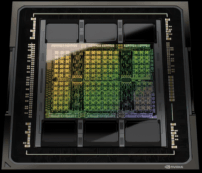The recent MTV Video Music Awards (VMAs) left no doubt that the music industry is all-in on the metaverse**.**
Not only did this year’s VMAs see the first-ever award for Best Metaverse Performance, but it also featured Eminem and Snoop Dogg presenting a collaboration based on Yuga Labs’ new metaverse project, Otherside.
This focus on the metaverse is by no means a sudden surge of interest or an attempt to jump on the latest trend. Rather, it’s the culmination of years of effort and experimentation on the part of musicians and record labels:
- In 2013, Icelandic band Sigur Rós began working with VR startup Magic Leap to build an immersive audiovisual experience.
- In 2018, both Coachella and Lollapalooza festivals experimented with offering VR streaming for performances by stars such as Beyoncé and The Weeknd.
- In 2020, Travis Scott’s game-changing Fortnite concert reached an audience of 27 million and formed the basis for a more interactive, narrative-driven exploration of the same idea by Ariana Grande in 2021.
Over the past eighteen months, the steady drip of metaverse-focused music projects has become a torrent. And this is just the beginning. Fortnite’s owner Epic Games is planning to launch a virtual concert arena within the game world, and they recently purchased the music streaming platform Bandcamp to support their efforts.
Artists continue exploring new ways to connect with fans through virtual worlds, from Megan Thee Stallion’s recent VR concert tour to Snoop Dogg’s long-awaited Snoopverse world in The Sandbox.
When it comes to bringing the metaverse to the mainstream, the music industry is leading the charge. Nevertheless, some key questions remain about what form the metaverse will take. If we want to understand both the potential of the metaverse and the pitfalls it could face in the coming decade, we will do well to look to the music industry for clues.
The challenges of a music-focused metaverse
There are two key issues that we can already see emerging in the metaverse as it exists today – both of which are highlighted by virtual concerts.
- Lack of true digital ownership. While Ariana Grande and others have incorporated player-owned digital assets and wearables into their virtual performances, these usually remain tied to an account controlled by the game’s developers. Players cannot transfer these to other metaverse worlds or sell them to others.
- Latency and outage issues. As metaverse concerts grow in scale and become more interactive, the potential for latency issues to affect immersion grows – after all, music is highly dependent on synchronisation! Similarly, the kinds of large-scale outages that have affected cloud-based services in recent years could massively disrupt a virtual concert.
These are not minor issues. Indeed, the significant failure of the Foo Fighters’ Super Bowl VR concert in February shows that they are already beginning to have an impact.
Thankfully, these problems are not insurmountable. In fact, the solutions are already being built – and here at Cudos, we are proud to be part of this vital process.
How Cudos is building a sustainable solution
True digital ownership has the potential to transform the music industry radically. We’re already seeing how blockchain-based digital assets can support a fundamentally new relationship between artists and their audiences.
An ownership economy will allow fans to support creators – including musicians – much more directly and provide a true sense of involvement. Music has long attracted collectors looking to amass everything from rare vinyl to ticket stubs, and tokenisation can extend this more widely.
But for this to work, digital assets must be interoperable. Having skins or wearables siloed on a specific chain or isolated to a given virtual world will limit their appeal. Here at Cudos, we strive to build a network that offers maximum flexibility and mobility for digital assets by incorporating a growing number of cross-chain bridges and building extensive partnerships with other leading networks and infrastructure providers.
We also recognise that the metaverse will require a massive increase in computing power. The prospect of tens or hundreds of millions attending the same virtual concert is thrilling – but the technical hurdles are significant.
Our soon-to-launch CUDO Compute platform aims to provide a robust, secure and low-latency source of distributed cloud computing to power Web3 and the metaverse. By distributing compute across a decentralised network, we can avoid outages and bring compute closer to the end-user while making the process significantly more sustainable. The potential benefits for metaverse concerts will be massive.
Support our efforts to power the metaverse
Here at Cudos, we are committed to building a sustainable and shared future for the web, and we have recently hit several key milestones in our journey, including the mainnet launch of our blockchain network and a major listing on Crypto.com’s global digital asset exchange.
As we look toward the early-access testing phase of CUDO Compute, we need your support to help us keep up this remarkable pace. Register your interest today if you would like to help.
You can also:
- Join the Cudos’ Discord server
- Join the Cudos’ Telegram community
- Buy CUDOS tokens
- Become a Cudos ambassador
Come build with us today!
About CUDO Compute
CUDO Compute is a fairer cloud computing platform for everyone. It provides access to distributed resources by leveraging underutilised computing globally on idle data centre hardware. It allows users to deploy virtual machines on the world’s first democratised cloud platform, finding the optimal resources in the ideal location at the best price.
CUDO Compute aims to democratise the public cloud by delivering a more sustainable economic, environmental, and societal model for computing by empowering businesses and individuals to monetise unused resources.
Our platform allows organisations and developers to deploy, run and scale based on demands without the constraints of centralised cloud environments. As a result, we realise significant availability, proximity and cost benefits for customers by simplifying their access to a broader pool of high-powered computing and distributed resources at the edge.
Continue reading

High-performance cloud GPUs
